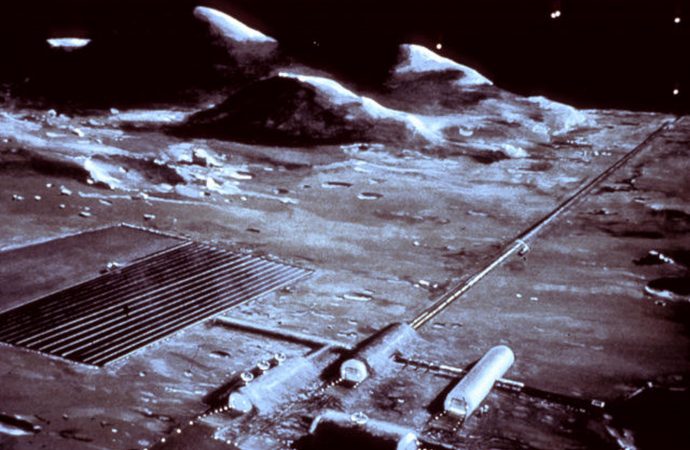The United States Navy fired a projectile at Mach 6 during a recent test with an electromagnetic railgun, suggesting that early ideas about using such tech to launch payloads from the lunar surface might not be so sci-fi after all.
Mach 6 (six times the speed of sound) is 4,567 mph (7,350 km/h). The escape velocity at the moon is just a shade faster than that — 5,300 mph (8,530 km/h).
The Office of Naval Research work on the EM Railgun launcher is being pursued as a long-range weapon that fires projectiles using electricity instead of chemical propellants.

Credit: Office of Naval Research
Magnetic fields created by high electrical currents accelerate a sliding metal conductor, or armature, between two rails to launch projectiles.
In 1974, Princeton professor and space visionary Gerard O’Neill first proposed using an electromagnetic railgun to lob payloads from the moon.
“Mass drivers” based on a coilgun design could be adapted to accelerate a nonmagnetic object, O’Neill suggested. One application he proposed for mass drivers: tossing baseball-size chunks of ore mined from the surface of the moon into space, where they could be used as raw material for building space colonies and solar power satellites.
O’Neill worked at the Massachusetts Institute of Technology with Henry H. Kolm and a group of student volunteers to construct a mass driver prototype. Backed by grants from the Space Studies Institute, later prototypes improved on the concept, showing that a mass driver only 520 feet (160 meters) long could launch material off the surface of the moon.
An official at the Office of Naval Research, contacted by Inside Outer Space, said this of O’Neill’s seminal work on mass drivers: “Very interesting proposal to use electromagnetic launchers for space vehicles. Considering the fact that the railgun is working with a small hypervelocity projectile, and requires significant power and thermal management, I suspect working out the details for movement of larger space vehicles/payloads is a long way off.

Credit: Space Studies Institute
“But I also believe that current efforts will be successful, and electromagnetic thrust will eventually be considered for other applications, including space,” the official added.
Source: Space.com


































Leave a Comment
You must be logged in to post a comment.